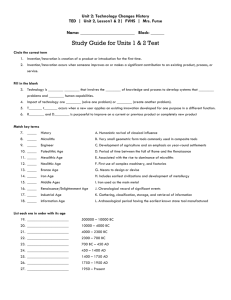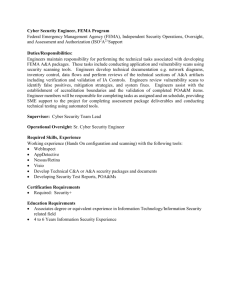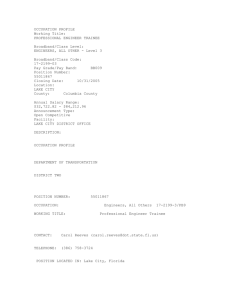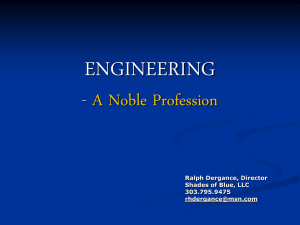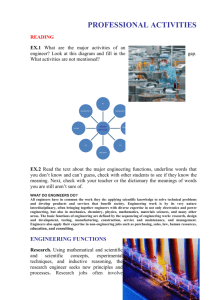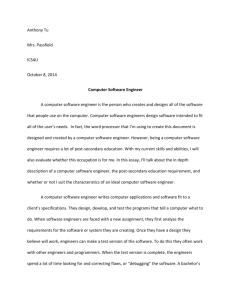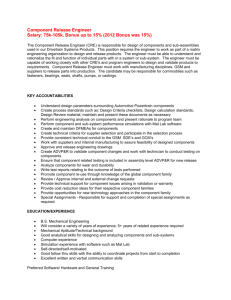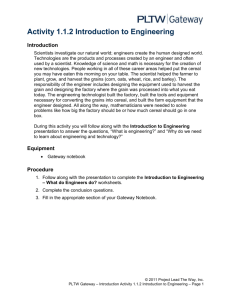study guide
advertisement
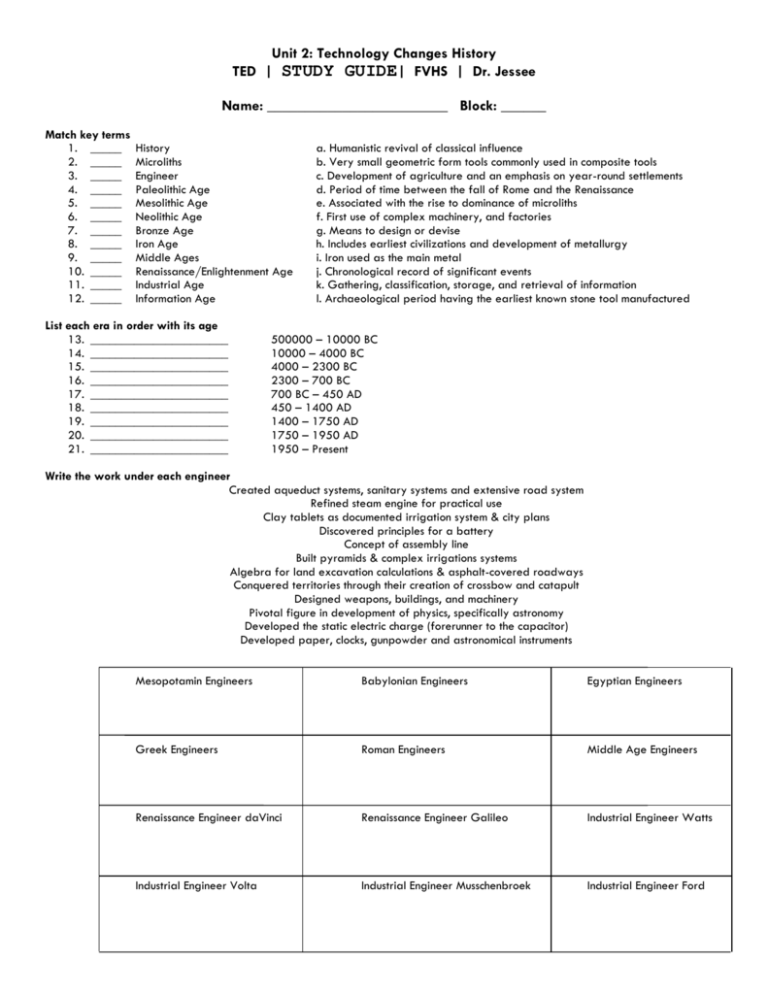
Unit 2: Technology Changes History TED | STUDY GUIDE| FVHS | Dr. Jessee Name: ________________________ Block: ______ Match key terms 1. _____ 2. _____ 3. _____ 4. _____ 5. _____ 6. _____ 7. _____ 8. _____ 9. _____ 10. _____ 11. _____ 12. _____ History Microliths Engineer Paleolithic Age Mesolithic Age Neolithic Age Bronze Age Iron Age Middle Ages Renaissance/Enlightenment Age Industrial Age Information Age List each era in order with its age 13. ______________________ 14. ______________________ 15. ______________________ 16. ______________________ 17. ______________________ 18. ______________________ 19. ______________________ 20. ______________________ 21. ______________________ a. Humanistic revival of classical influence b. Very small geometric form tools commonly used in composite tools c. Development of agriculture and an emphasis on year-round settlements d. Period of time between the fall of Rome and the Renaissance e. Associated with the rise to dominance of microliths f. First use of complex machinery, and factories g. Means to design or devise h. Includes earliest civilizations and development of metallurgy i. Iron used as the main metal j. Chronological record of significant events k. Gathering, classification, storage, and retrieval of information l. Archaeological period having the earliest known stone tool manufactured 500000 – 10000 BC 10000 – 4000 BC 4000 – 2300 BC 2300 – 700 BC 700 BC – 450 AD 450 – 1400 AD 1400 – 1750 AD 1750 – 1950 AD 1950 – Present Write the work under each engineer Created aqueduct systems, sanitary systems and extensive road system Refined steam engine for practical use Clay tablets as documented irrigation system & city plans Discovered principles for a battery Concept of assembly line Built pyramids & complex irrigations systems Algebra for land excavation calculations & asphalt-covered roadways Conquered territories through their creation of crossbow and catapult Designed weapons, buildings, and machinery Pivotal figure in development of physics, specifically astronomy Developed the static electric charge (forerunner to the capacitor) Developed paper, clocks, gunpowder and astronomical instruments Mesopotamin Engineers Babylonian Engineers Egyptian Engineers Greek Engineers Roman Engineers Middle Age Engineers Renaissance Engineer daVinci Renaissance Engineer Galileo Industrial Engineer Watts Industrial Engineer Volta Industrial Engineer Musschenbroek Industrial Engineer Ford Write the age beside each group of artifacts 22. Telescope, microscope, thermometer, clocks, barometer ::: ________________ Age 23. Bronze jewelry, tools, weapons ::: ________________ Age 24. Transistor, integrated circuit, satellite, digital photography, artificial heart, nuclear power plant ::: ________________ Age 25. Stone axes, bone needles, hearth sites ::: ________________ Age 26. Steam engine, electricity, automobile, airplane, radio, television, telephone, rocket ::: ________________ Age 27. Leatherwork, basketry, fishing tackle, stone axes and wooden objects, canoes and bows ::: ________________ Age 28. Iron chisels, ornamental jewelry, swords, axes, spearheads ::: ________________ Age 29. Wheeled plow, horseshoes, waterwheels, windmill, cast iron, cannons, compass, ocean-going ships ::: ________________ Age 30. Pottery, polished stone tools, spinning and weaving tools, wooden plows, sickles ::: ________________ Age 31. 32. 33. 34. 35. 36. _____ _____ _____ _____ _____ _____ System Social Impacts Cultural Impacts Economic Impacts Political Impacts Environmental Impacts a. Increased tax base and employment/jobs b. Recreation facilities, places of worship & clubs and organizations c. Leadership decisions, laws & enforcement d. Historical, archeological & geological e. Loss of habitat & wetlands, water pollution, air pollution, noise pollution, light pollution f. Building block of technology Answer each question below using 3/4 complete sentences. 37. Explain how the introduction of a new technology would change the current process used in creating a product. 38. List three instances of technological progress that promoted the advancement of science and mathematics. 39. Select one of the following areas of technology and explain how technology changed the way people live and work; agriculture, manufacturing, sanitation and medicine, warfare, transportation, information processing, and communications.
